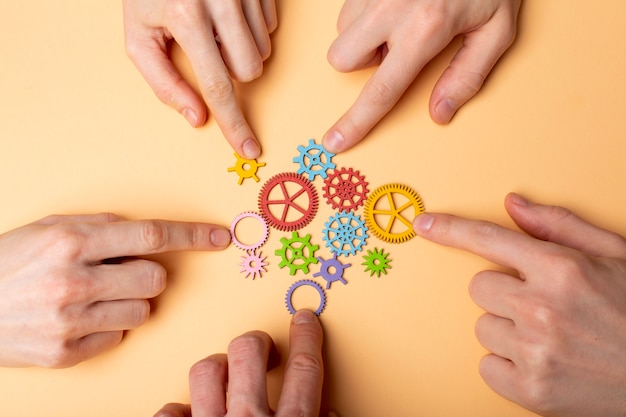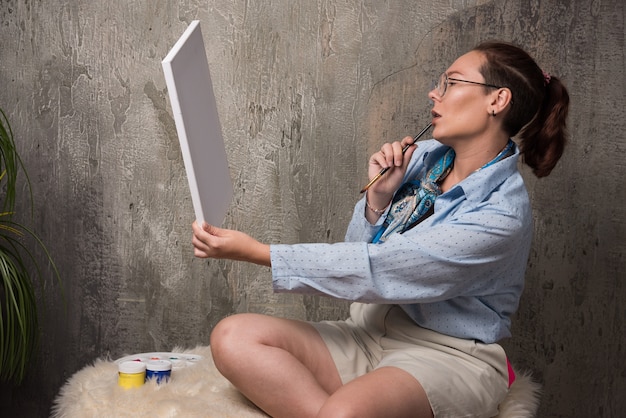Introduction: Navigating the Challenges of Additive Manufacturing

Three-dimensional (3D) printing, also known as additive manufacturing, offers remarkable capabilities for rapid prototyping, customized production, and intricate design realization. However, the process is not without its challenges. A range of errors can occur throughout the printing lifecycle, from initial design flaws to malfunctioning hardware. Understanding these potential issues and their corresponding solutions is crucial for achieving successful and reliable 3D printing outcomes. This comprehensive guide explores common 3D printing problems, providing detailed explanations, troubleshooting strategies, and preventative measures to ensure optimal performance and high-quality prints.
I. Design-Related Errors

A. Model Errors
Errors stemming from the digital design stage can significantly impact the printability and final quality of the 3D-printed object. These issues often manifest as printing failures or unsatisfactory results.
- Non-Manifold Geometry: This refers to inconsistencies in the model’s surface where faces intersect incorrectly or overlap. This often leads to slicing errors and failed prints. Solution: Repair the model using specialized software like Meshmixer, Netfabb, or Blender, ensuring all surfaces are properly connected and closed.
- Overlapping or Intersecting Geometry: Similar to non-manifold geometry, overlapping parts cause confusion for the slicer, resulting in unpredictable printing behavior. Solution: Identify and correct the overlapping sections in the CAD software, ensuring proper separation between model components.
- Insufficient Wall Thickness: Thin walls can collapse under their own weight during printing or result in a weak final product. Solution: Increase wall thickness in the slicer settings or modify the design for added structural integrity. Consider using infill strategically to further reinforce weak areas.
- Unsupported Overhangs and Bridges: Features that extend horizontally without sufficient support can sag or detach during the printing process. Solution: Add support structures in the slicer software, carefully considering their placement and density to prevent warping or damage. Design modifications to reduce overhangs are also effective.
- Incorrect Orientation: The orientation of a model on the build plate significantly affects the success of the print. Incorrect orientation may lead to warping, delamination, or increased printing time. Solution: Experiment with different orientations to minimize overhangs and support structures, optimize print time, and ensure proper adhesion to the build plate. Software typically allows for previewing the print orientation before commencing the process.
B. Slicing Errors
The slicing process converts the 3D model into instructions for the 3D printer. Errors in this stage can lead to flawed prints or complete printing failures.
- Incorrect Layer Height: Setting an inappropriately thin or thick layer height can affect print quality, detail resolution, and printing time. Solution: Choose a layer height suitable for both the printer’s capabilities and the desired level of detail in the final product. Experimentation is often necessary to determine the optimal layer height for a specific material and printer.
- Insufficient Infill Density: Low infill density can lead to weak or brittle prints, particularly in larger or complex models. Solution: Increase infill density to enhance structural integrity. The required density depends on the model’s intended use and design.
- Incorrect Support Structure Generation: Improperly generated support structures can result in model damage or difficulty removing supports after printing. Solution: Adjust support settings in the slicer software, paying attention to density, overhang angle, and the type of support used. Consider using tree supports or other advanced support options for optimal results.
- Slicer Software Glitches: Bugs or errors within the slicer software itself can produce incorrect G-code, leading to printing errors. Solution: Ensure the slicer software is up-to-date, and consider using a different slicer as a potential workaround if an error persists. Occasionally, restarting the software can resolve temporary glitches.
II. Hardware-Related Errors
A. Printer Calibration Issues
Maintaining proper calibration is critical for consistent and accurate 3D printing. Miscalibration can lead to various problems.
- Bed Leveling: Improper bed leveling results in uneven adhesion, leading to warping, lifting, or failed prints. Solution: Carefully level the print bed using the printer’s leveling procedure. Many printers offer automated bed leveling, while others require manual adjustment with shims or screws. Regular bed leveling checks are crucial.
- Nozzle Height: The nozzle’s distance from the bed influences extrusion and layer adhesion. Incorrect nozzle height can lead to insufficient material deposition or excessive oozing. Solution: Adjust the nozzle height according to the manufacturer’s instructions and use a test print to fine-tune the distance.
- Extruder Calibration: Inaccurate extrusion can result in inconsistent layer thickness, under-extrusion, or over-extrusion. Solution: Calibrate the extruder using a known volume of filament to ensure the correct amount of material is dispensed for each layer. This often involves adjusting the extruder’s steps per millimeter setting.
- Z-Axis Binding: Binding in the Z-axis (vertical movement) can cause layers to be misaligned or prevent smooth movement, resulting in inconsistent heights. Solution: Lubricate moving parts, check for obstructions, and tighten or adjust components as necessary to eliminate binding. Regular maintenance is essential to prevent Z-axis issues.
B. Material-Related Errors
The filament or resin used in 3D printing plays a significant role in the success or failure of a print. Issues with material handling and properties can lead to printing problems.
- Filament Diameter Inconsistency: Variations in filament diameter can lead to inconsistent extrusion and layer adhesion problems. Solution: Use high-quality filament from reputable manufacturers. Measure the filament diameter regularly to ensure it remains consistent within the printer’s tolerance range.
- Moisture Absorption (Filament): Hygroscopic filaments (such as PLA) absorb moisture from the air, leading to bubbling, cracking, or stringing during printing. Solution: Store filaments in airtight containers with desiccant packs to minimize moisture absorption. Dry filaments in a dehydrator or oven before use if moisture is suspected.
- Clogged Nozzle: A clogged nozzle prevents smooth filament flow, leading to under-extrusion or failed prints. Solution: Clean the nozzle using a needle or specialized nozzle cleaning tools. High temperatures may also be used to melt and clear clogs. Preventative measures include using a filter to prevent debris from entering the nozzle.
- Incorrect Material Settings: Using incorrect material settings in the slicer (temperature, retraction, etc.) can lead to suboptimal print quality. Solution: Use the correct material settings recommended by the filament manufacturer or through online resources. Experiment with minor adjustments to optimize settings for the specific printer and filament.
C. Other Hardware Malfunctions
Several other hardware components can malfunction, impacting the 3D printing process.
Read Also: 3D Printing Errors: Causes & Fixes – Printing Test Pages
- Fan Failure: Insufficient cooling can lead to warping, deformation, or even nozzle clogging. Solution: Check the fan for proper operation. Replace the fan if it is faulty. Ensure proper airflow around the print head.
- Power Supply Issues: Insufficient or unstable power can disrupt the printing process or damage the printer. Solution: Ensure the power supply is adequate for the printer’s requirements. Use a surge protector to prevent power surges from damaging the printer.
- Stepper Motor Problems: Malfunctioning stepper motors can result in inconsistent movement, leading to misaligned layers or skipped steps. Solution: Check for loose connections, damaged wires, or motor issues. Replace faulty stepper motors as needed.
- Print Bed Adhesion Issues: Poor adhesion between the print and the bed leads to warping or complete detachment. Solution: Clean the bed surface thoroughly with isopropyl alcohol or other suitable cleaners. Apply adhesion promoters like glue sticks or specialized coatings to improve adhesion.
III. Software and G-Code Errors
Errors related to the G-code instructions or the software controlling the printer can also result in printing problems.
- G-Code Errors: Incorrect G-code can lead to unpredictable behavior, skipped layers, or complete printing failure. Solution: Verify the G-code file for errors using a G-code verifier. Reslice the model if errors are found. Ensure the G-code is compatible with the 3D printer’s capabilities.
- Firmware Issues: Outdated or corrupted firmware can lead to malfunctions and unexpected behavior. Solution: Update the printer’s firmware to the latest version available from the manufacturer. Follow the manufacturer’s instructions carefully during the firmware update process.
- Software Crashes: Software crashes can interrupt the printing process, leading to incomplete prints. Solution: Ensure the software is up-to-date and running smoothly. Close unnecessary applications to free up system resources. Consider using more stable software options if crashes are frequent.
IV. Preventative Measures and Best Practices
Proactive measures can significantly reduce the occurrence of 3D printing errors.
- Regular Maintenance: Perform regular maintenance on the 3D printer, including cleaning, lubrication, and inspection of components.
- High-Quality Materials: Use high-quality filament or resin from reputable manufacturers.
- Proper Storage: Store filaments in airtight containers with desiccant packs to prevent moisture absorption.
- Thorough Model Inspection: Carefully inspect the 3D model for errors before slicing and printing.
- Systematic Troubleshooting: Develop a systematic approach to troubleshooting, eliminating potential causes one by one.
- Documentation: Maintain detailed records of printing parameters, settings, and outcomes for future reference.
Conclusion: Mastering the Art of Additive Manufacturing
Successful 3D printing requires a comprehensive understanding of the process, from design to post-processing. While errors are inevitable, the ability to identify, diagnose, and rectify them is crucial for achieving high-quality results. By implementing the preventative measures and troubleshooting techniques outlined in this guide, users can significantly improve their 3D printing success rate, unlocking the full potential of this transformative technology. Continuous learning and experimentation are key to mastering the art of additive manufacturing and overcoming the challenges inherent in this dynamic field.

